Chapter: Operations Research: An Introduction : Classical Optimization Theory
Newton Raphson Method -Unconstrained Problems
The Newton-Raphson Method
In general, the necessary condition equations, Ñ f(X) = 0, may be difficult to solve numerically. The Newton-Raphson method is an iterative procedure for solving simultaneous nonlinear equations.
Consider the simultaneous equations
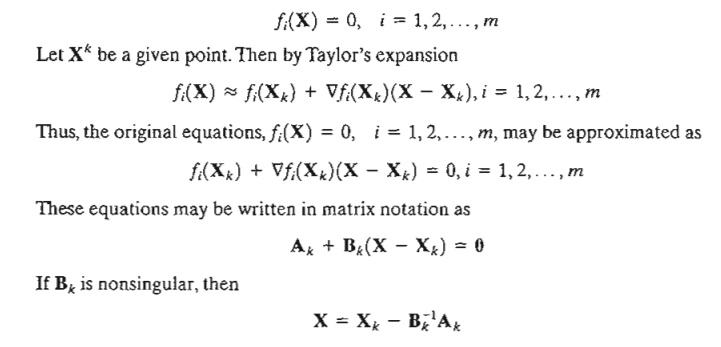
The idea of the method is to start from an initial point X o and then use the equation above to determine a new point. The process continues until two successive points, X k and X k +1 are approximately equal.
A geometric interpretation of the method is illustrated by a single-variable function in Figure 18.3. The relationship between xk and xk+1 for a single-variable function f(x) reduces to
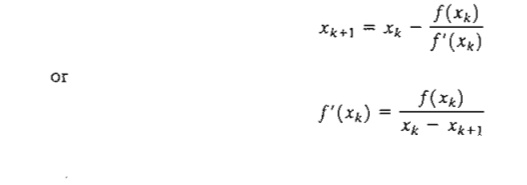
FIGURE 18.3
Illustration of the iterative process in the Newton-Raphson method
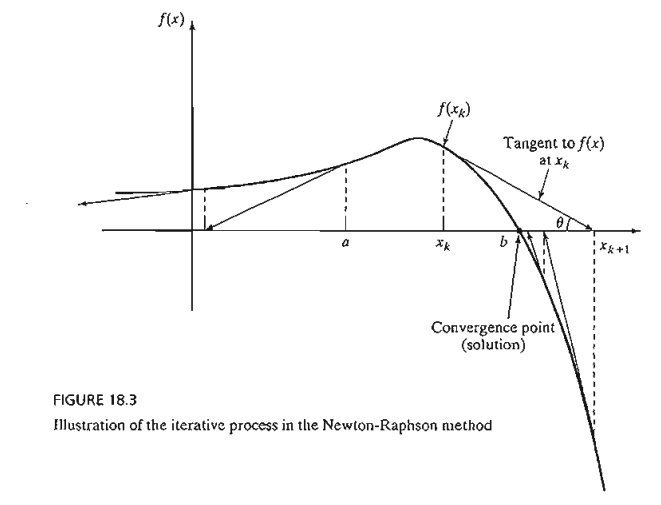
The figure shows that xk+1 is determined from the slope of f(x) at xk where tan q = f' (xk).
One difficulty with the method is that convergence is not always guaranteed unless the function f is well behaved. In Figure 18.3, if the initial point is a, the method will diverge. In general, trial and error is used to locate a "good" initial point.
Example 18.1-3
To demonstrate the use of the Newton-Raphson method, consider determining the stationary points of the function

To determine the stationary points, we need to solve
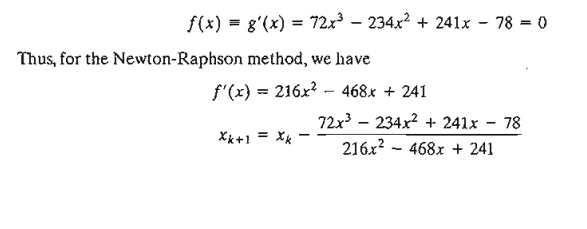
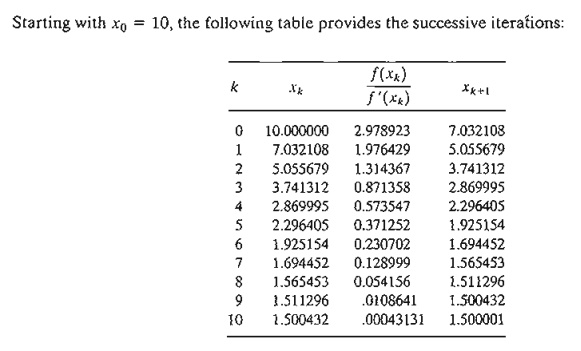
The method converges to x = 1.5. Actually, f(x) has three stationary points at x = 2/3, x = 13/12, and x = 3/2. The remaining two points can be found by selecting different values for initial xo. In fact, xo = .5 and xo = 1 should yield the missing stationary points.
Excel Moment
Template excelNR.xls can be used to solve any single-variable equation. It requires entering f(x)/f' (x) in cell C3. For Example 18.1-3, we enter

The variable x is replaced with A3. The template allows setting a tolerance limit Δ, which specifies the allowable difference between xk and xk+1 that signals the termination of the iterations. You are encouraged to use different initial xo to get a feel of how the method works.
In general, the Newton-Raphson method requires making several attempts before "all" the solutions can be found. In Example 18.1-3, we know beforehand that the equa-tion has three roots. This will not be the case with complex or multi-variable functions, however.
PROBLEM SET 18.1B
1. Use NewtonRaphson.xls to solve Problem I(c), Set I8.la.
2. Solve Problem 2(b), Set I8.la by the Newton-Raphson method.
Related Topics